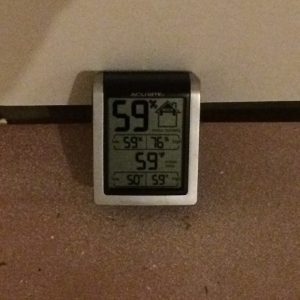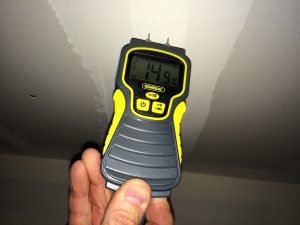Environmental Control
By Myron R. Ferguson
It was late October in Upstate New York, which is close to my cutoff date for working without heat.
It is tough enough trying to do drywall work in the summer months but with colder weather we all really need to be more vigilant with controlling the environment on the jobsite.
I have often said that drywall work will come out just fine and will look good after a complete cycle of seasons even when 100% of conditions are not right. I try to have conditions as close to optimum as possible but I have to give and take a little because I work in the real world. But I will walk away from a job that is just too far from optimum
When colder weather approaches the temperature swings are just too great to do drywall work without heat. When the recommended minimum working temperature of 55 degrees F is difficult to meet during the day it is impossible once the sun sets without heat. (As far as temperature goes too low is bad but so is too high.) Seldom is the natural temp too high but running heaters at full blast to make up for low temperatures at night causes too much of a fluctuation which can cause cracks or poor adhesion. But it is not temperature alone that we have to take charge of. Don’t forget about the humidity which is kind of obvious when taping but what about when hanging the drywall. If the building materials have a much higher moisture content then they will have when the building is occupied there will be some contraction of the materials as they dry out. And don’t forget about keeping the air moving by running fans, providing ventilation or running dehumidifiers. This will help equalize the temperature and humidity in those closed off areas such as closets, bathrooms, and basement areas or any other places that are poorly heated.
So the temperature, humidity, and airflow all have to be considered when doing any phase of drywall work. Keeping a consistent temperature and humidity along with good air flow for 24 hours a day before the drywall work begins, while the work is being done, and after completion is the goal.
Below is a helpful list of points to remember or to pass along to the building contractor:
- Condition the drywall before hanging by bringing the drywall in a few days early and making sure the jobsite conditions are idea at this stage as well as when taping begins
- Have temperature of 55 degrees F, humidity of 40% or lower, with good air movement even in hard to get at areas. NOTE: The temperature is for the air, compound and drywall surface.
- Best Results can be obtained when environmental conditions are the same while working as they will be when occupied.
- Permanent heating and air conditioning shall be used whenever possible
- Unvented gas or oil heaters should not be used.
- Jobsite lighting while finishing shall be equivalent to when occupied or of greater intensity.
- Compounds should be applied to dry surfaces and allowed to fully dry before between coats and before decorating.
- Get a moisture meter to check moisture content behind the tape and have a humidistat on site.
- During the winter months the process may have to slow down a little. Maybe it will take longer for the compound to dry if conditions are as low as 55 degrees F so take an extra day between coats. Let the place set an extra day before starting to sand and prime.

